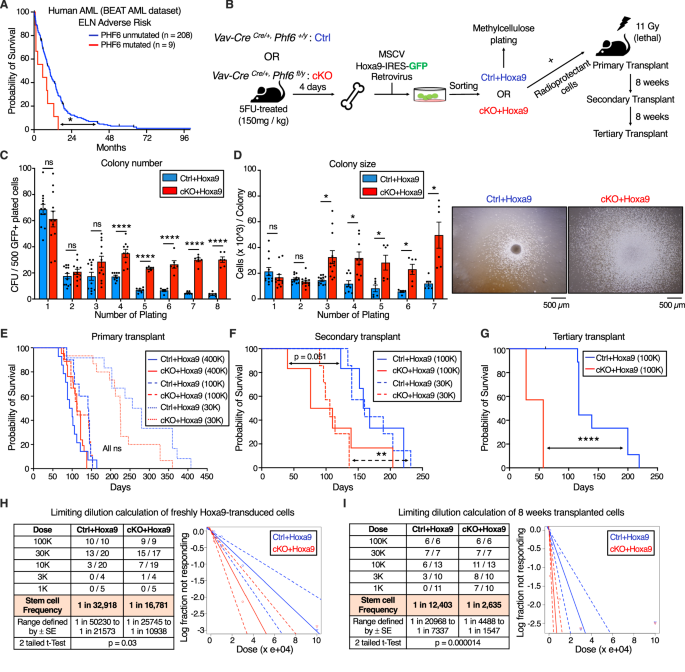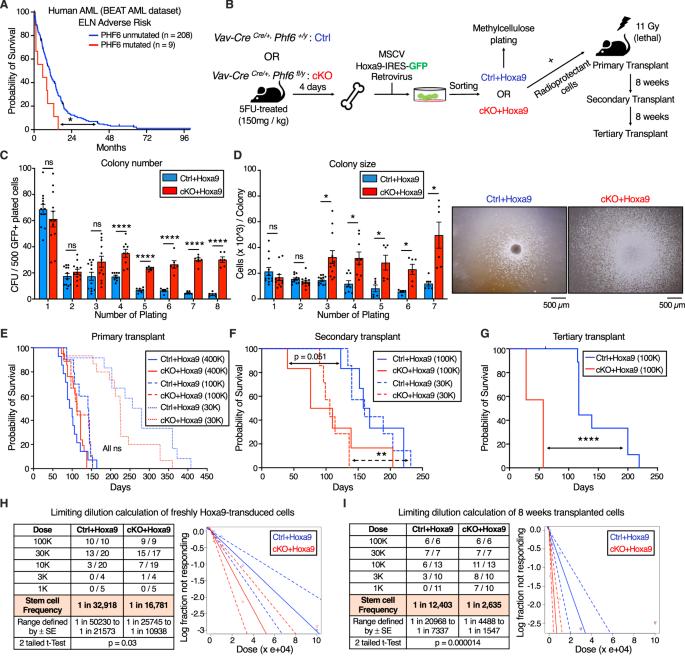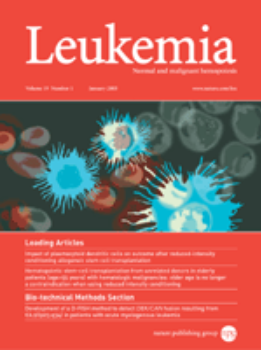PHF6 抑制急性髓细胞性白血病干细胞的自我更新
IF 12.8
1区 医学
Q1 HEMATOLOGY
引用次数: 0
摘要
急性髓系白血病的特征是自我更新的髓系祖细胞不受控制地增殖,同时伴有分化停滞。PHF6是一种在骨髓性白血病中发生突变的染色质结合蛋白,其分离缺失会增加小鼠造血干细胞的自我更新,但不会发生恶性转化。我们在此报告,Phf6 基因敲除会增加 Hoxa9 驱动的急性髓细胞白血病在连续移植过程中的侵袭性,并增加白血病始发细胞的频率。我们定义了 Hoxa9 驱动的急性髓细胞性白血病的体内分级,并确定了一个我们称之为 "LIC-e"(白血病始发细胞富集)的群体。我们发现,Phf6的缺失扩大了LIC-e群体,并使其转录组偏向更像干细胞的状态;在人类AML细胞系的PHF6敲除和BEAT AML数据集中的PHF6突变患者样本中,也观察到了一致的转录组转变。我们证明,Phf6 基因敲除急性髓细胞性白血病中 LIC-e 的积累不是由于对细胞周期或细胞凋亡的影响,而是由于其后代中保留 LIC-e 特征的部分增加。我们的研究表明,Phf6缺失通过对白血病干细胞的特异性影响增加了急性髓细胞白血病的自我更新。本文章由计算机程序翻译,如有差异,请以英文原文为准。


PHF6 suppresses self-renewal of leukemic stem cells in AML
Acute myeloid leukemia is characterized by uncontrolled proliferation of self-renewing myeloid progenitors accompanied by a differentiation arrest. PHF6 is a chromatin-binding protein mutated in myeloid leukemias, and its isolated loss increases mouse HSC self-renewal without malignant transformation. We report here that Phf6 knockout increases the aggressiveness of Hoxa9-driven AML over serial transplantation, and increases the frequency of leukemia initiating cells. We define the in vivo hierarchy of Hoxa9-driven AML and identify a population that we term the “LIC-e” (leukemia initiating cells enriched) population. We find that Phf6 loss expands the LIC-e population and skews its transcriptome to a more stem-like state; concordant transcriptome shifts are also observed on PHF6 knockout in a human AML cell line and in PHF6 mutant patient samples from the BEAT AML dataset. We demonstrate that LIC-e accumulation in Phf6 knockout AML occurs not due to effects on cell cycle or apoptosis, but due to an increase in the fraction of its progeny that retain LIC-e identity. Our work indicates that Phf6 loss increases AML self-renewal through context-specific effects on leukemia stem cells.
求助全文
通过发布文献求助,成功后即可免费获取论文全文。
去求助
来源期刊

Leukemia
医学-血液学
CiteScore
18.10
自引率
3.50%
发文量
270
审稿时长
3-6 weeks
期刊介绍:
Title: Leukemia
Journal Overview:
Publishes high-quality, peer-reviewed research
Covers all aspects of research and treatment of leukemia and allied diseases
Includes studies of normal hemopoiesis due to comparative relevance
Topics of Interest:
Oncogenes
Growth factors
Stem cells
Leukemia genomics
Cell cycle
Signal transduction
Molecular targets for therapy
And more
Content Types:
Original research articles
Reviews
Letters
Correspondence
Comments elaborating on significant advances and covering topical issues
 求助内容:
求助内容: 应助结果提醒方式:
应助结果提醒方式:


